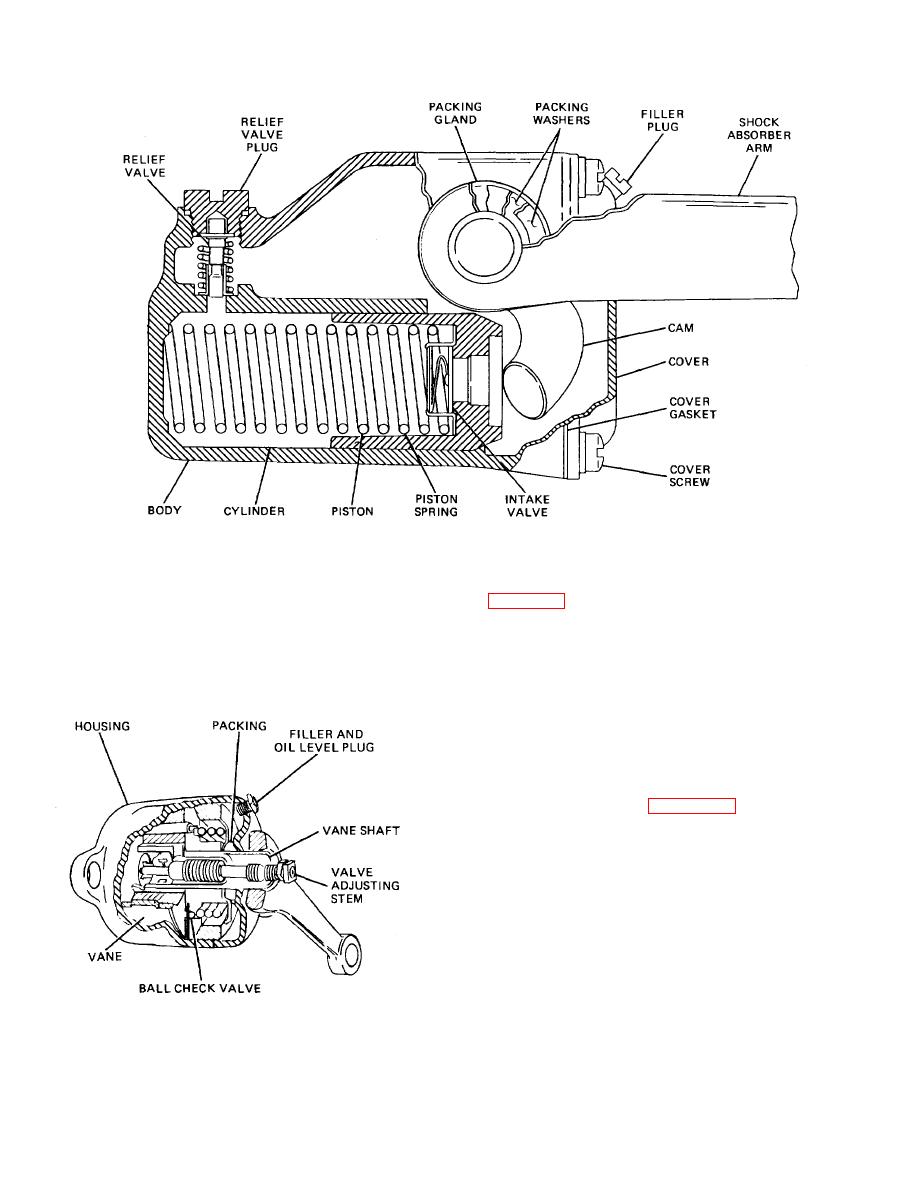
| Tweet |

Custom Search
|
|

|
||
 TM 9-8000
Figure 30-21. Single-Acting Cam-Operated Shock Absorber.
valves in the stationary partitions. On the rebound
c. Direct Acting. The direct-acting shock absorber
stroke, the vanes develop a pressure on the opposite
side, closing the check valves. Because oil cannot flow
through tire check valves, it is forced through the needle
special shock absorber oil, divided into an upper and
valve in the center of the shaft, thereby producing a
lower chamber by a double-acting piston. The shock
resistance to motion of the arm. The vane-type shock
absorber is mounted by studs and rubber bushings
absorber is not used widely, primarily because of the
inserted through the eye on each end so that it is acted
high cost and poor reliability resulting from the difficulty in
directly upon by spring action. The piston push rod,
sealing this type.
therefore, is forced up and down within the inner cylinder.
A reservoir that contains an ample supply of oil
surrounds the inner cylinder and is joined to it by a
reservoir check valve. When the vehicle spring is
compressed, the piston is forced down, and some of the
oil below the piston is forced through compression valves
(only one is illustrated in figure 30-23) inside the piston to
the upper chamber. These valves operate only on the
downstroke. Because the push rod moves into the
cylinder on the downstroke, some of the oil in the lower
chamber is forced through the check valve at the bottom
of the cylinder into the reservoir.
When the vehicle spring rebounds, the piston is moved
up, and oil from the upper chamber is forced into the
lower chamber through spring-loaded rebound valves
inside the piston. These valves control the rebound of
the
vehicle
spring.
Figure 30-22. Vane-Type Shock Absorbers.
TA233812
30-15
|
||
 |
||